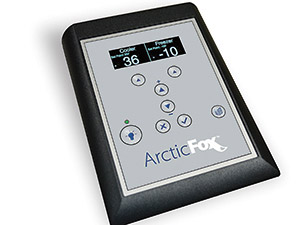2020 vision: Foodservice industry trends for a new era
2019 was a good year for the foodservice industry and was full of trends like conscious eating, and smaller restaurants and third-party food delivery. These large trends are spilling into the new era along with new ones, affecting in almost every aspect of foodservice including regulation, manufacturing and technology.
This year food trends from the past make a comeback, like more involved kid’s menus that feature updated versions of old classics and a continuation of the smaller restaurant trend that was seen in 2019. As we enter a new era of food, concerns over the labor market and economic stability continue to challenge business owners, according to market experts at Grand View Research. But there is good news! Research shows that quick service restaurants will see growth and full-service restaurants will remain the largest generator of revenue up to 2025.
There are a variety of ways that restaurateurs and operators can adapt to these trends and thrive in 2020 and beyond. Consumers are more focused on living more conscious lifestyles and foodservice operators are being guided to invest in more eco-friendly and energy efficient equipment to meet changing needs.

1. Energy consumption awareness
According to a foodservice report by Grand View Research, the increase in government regulations concerning cleanliness and hygiene, and the enforcement of Environmental Protection Agency (EPA) standards are prompting foodservice equipment manufacturers to build more energy efficient products to ensure that kitchen operators will stay compliant.
In addition to the rise in popularity of the zero-waste kitchen, there is an increased need for more energy efficient products, driving the need for energy star certified products. Operators can build a more environmentally conscious kitchen operation better than before. Brands like Turbo Air, Blodgett, Southbend and Pitco all make highly efficient, Energy Star certified kitchen equipment.
You can browse all Energy Star certified equipment here.

2. The eco-friendly movement reaches the ocean
Sustainability was a big trend in 2019 and it is gaining momentum in 2020 as part a larger trend toward transparency in the industry. There is an increased awareness of unsustainable aquatic farming practices and zero waste. Chefs are now looking for sustainable seafood (i.e. lesser known fish) options beyond the expected like Wild Alaskan pollock, anchovies, monkfish and Acadian redfish.
The James Beard Foundation requires that all their Taste America events use their proprietary Smart Catch program to serve seafood in environmentally friendly ways. It might better serve your restaurant business to looking into your seafood sourcing practices and consider new partners that could bring better and more eco-friendly options to the table.

3. Rise of electric equipment
Rising demand for smart appliances that are easy to use and more eco-friendly has restaurant and hotel foodservice operators opting to purchase new equipment versus repairing existing appliances. Brands like Manitowoc, Blodgett, Carter-Hoffmann and Crown are a few of the leaders in the industry developing products that are compliant with new energy standards and regulations.
New government regulations on energy usage in commercial operations is pushing this trend in electric equipment that also features smart technology. Using electric equipment in the kitchen, namely cooking ranges, cuts energy usage down significantly as the energy needed to cook food is more concentrated to the cooking appliance than with many gas-operated equipment, which produces a higher amount of ambient heat.
We will see a rise in the use of electric ranges and countertop induction hotplates in 2020 as part of this emerging trend.

4. Smart Kitchens
Technological innovations in foodservice are helping kitchen operations in restaurants and hotels become even more streamlined. Many kitchens are moving toward smart appliances, mainly refrigeration. As the international food trade is made mostly of processed, canned and frozen food, the need for proper refrigeration that complies with EPA standards is more important than ever.
For example, Kolpak provides a total cooling control solution for electronic walk-in refrigeration. It is an optional, wifi monitoring system that can be controlled remotely. It tracks usage, temperature variations and features automatic defrost cycles. View all Kolpak products here
Carter-Hoffmann makes Tenderchef; a dry-aging refrigeration cabinet for aging beef, poultry, cheese and more. The cabinet features temperature and humidity controls that can be monitored online or from an app on your phone.
5. Higher quality meat options
While there is no slowing down of the trend of a healthier vegan lifestyle, more carnivores are questioning the condition of the meat that makes it to the plate. Expert chefs note that the demand for high-quality, hormone free meat options will continue to advance in 2020. Following the big plant-based-meat trend of 2019, while these options are definitely better for the environment, consumers asked whether many plant-based alternatives like impossible meat are truly healthier than their animal counterpart.
While the debate on this remains, and plant-based alternatives for meat continue to arise, the demand for unprocessed red meat is also creating new opportunities to provide customers with different options. High-protein diets like paleo and keto are becoming more popular and health-conscious people want healthier, more sustainable options.

6. Kitchen culture: Putting people before profits
2020 brings with it a changed kitchen culture. More kitchens throughout the country are focusing on mental health challenges, harassment issues and staff retention. Many restaurants are witnessing the end of the “bad boy chef” era, according to Opentable.com. Managers are increasing staff benefits and addressing the history of anxiety, stress and drug use within the industry by putting more focus on mindfulness, fitness and sustainable foods and lifestyles.
Kat Kinsman, senior editor at Food & Wine has not only written a book about anxiety, she started a help website called Chefs With Issues, which aims to give individuals in the foodservice industry, across all positions, a place to share their stories and share resources for dealing with the particular pressures of restaurant life.

7. Low ABV drinks add to the non-alcoholic movement
Beverage companies are producing packaged boozeless and low-alcohol beverages that imitate the flavors of classic cocktails like the martini and gin-and-tonics, as many individuals over the age of 21 are looking to decrease their alcohol intake, according to a Nation’s Restaurant news study. Restaurant industry experts say that people choose not to drink for many reasons, and that leaving non-alcoholic options off the menu in 2020 may just be bad hospitality.
While 2019 saw the rise of the non-alcoholic menu, 2020 is seeing the rise of full-service sobriety bars, or non-alcoholic bars and nightclubs – taking mocktails to the next level. Places like Vena’s Fizz House in Portland, Maine and Listen Bar in New York City are specializing in mixed drinks that are all zero proof. The sober bar concept is not exactly new, but it has spiked in popularity only recently, as individuals who are part of the wellness lifestyle look for healthier ways to party.
Did you enjoy this article?
Subscribe to stay up to date on industry news and receive exclusive sales and promotions.


